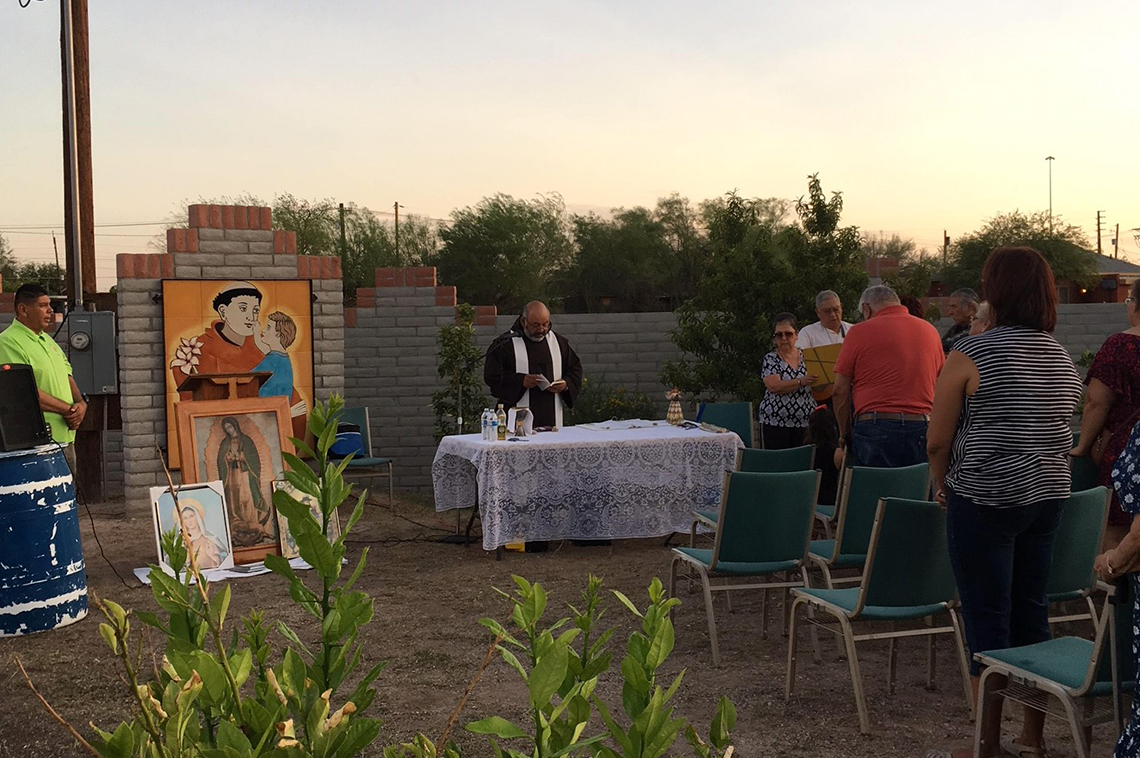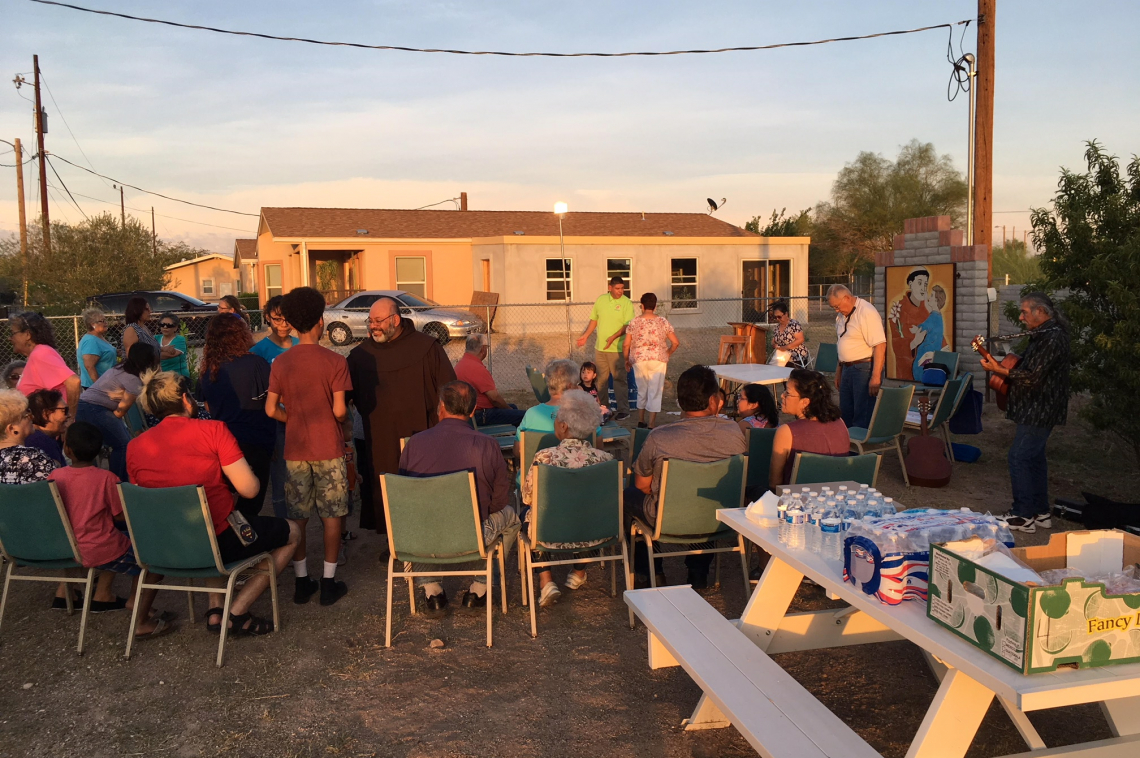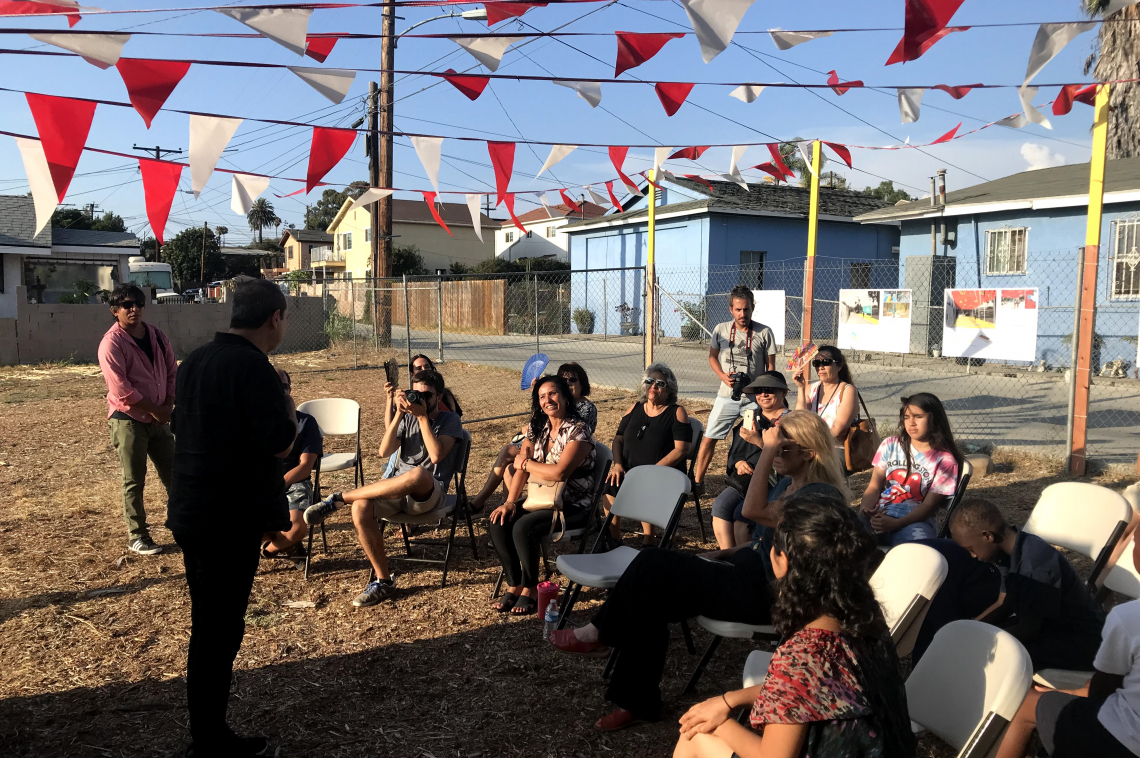


ArtPlace is partnering with NeighborWorks America throughout 2018 for a series of peer learning visits that will culminate in the creation of a new course for the NeighborWorks Training Institute in December. Read more about our housing research and partnership here.
Our first learning visit of five focused on the topic of culturally relevant affordable housing. It was held in San Ysidro, CA at Casa Familiar. This interview was conducted by ArtPlace consultant Danya Sherman in conversation with David Flores (DF) at Casa Familiar, and Nejlah Hummer (NH) the Primavera Foundation in the City of South Tucson, AZ, one of the visiting organizations. The interview has been edited for clarity and reviewed by all participants.
-
What’s the difference between housing and ‘home’ in a neighborhood?
DF: This summer, we had students from the University if California San Diego (UCSD) working with youth docents from the neighborhood. We had everyone interview residents to try to understand how to make the small alleyways, which are an underutilized network of spaces that form the fabric of our neighborhood, into a hyper-local cultural district. Instead of the UCSD students coming up with ideas themselves, the ideas came straight from the community, the UCSD students just found a way to visualize them. Ideas included identifying and demarking the zone with simple vertical elements like LED / solar lights, painting the alley grounds, and helping the fences and edges feel like entrances.
NH: A community-driven Mass service in a community garden has been developing in our neighborhood. We had developed land that used to belong to the Catholic church into affordable homes for low income first time homebuyers, but kept a piece for a community garden as a communal space, which never quite worked out. Recently a group of neighbors decided that they wanted to have Mass at the garden, and it's turned into this monthly thing where 50 to 60 people come to the garden for Mass. A family plays music, one of the priests from the local area comes and does a service, and now, it's turning into a potluck kind of thing afterwards. So while our idea of garden didn’t work out, the community turned it into what they wanted and we can learn from that.
In this work, do you make distinctions between arts versus culture?
DF: I think something we have been exploring is that the community isn’t as connected, and not using The Front Art Gallery (a space Casa Familiar created and hosts gallery shows in) as much as we thought. But, our project that we are closing on soon – El Salon and Casa Patio, which is utilizing the vacant Monte Carmelo church is very relevant. People are excited that we are rescuing it, and that it will be a place where they can come and get coffee. We are also introducing theatre. It is a familiar space and place – the same thing that Nejlah is describing in the City of South Tucson. Maybe even the priest from Monte Carmelo will want to do something or see something or connect in some way. In this work, our organizations need to do all that we can to remember and historic links to spaces and traditions that the community remembers and holds dear.
So religious services, and other practices, can create culture along side theater and other artistic practices?
NH: For us, arts and culture and religion are kind of all tied together and a lot of artwork that many resident artists have created around the City of South Tucson has religious themes. The way that we're looking at arts and culture is really an important vehicle for neighborhood revitalization and economic development because the city is really struggling. There are a lot of local businesses here, but the city is at kind of at a crossroads right now. Downtown Tucson, which is just a couple of miles north, is booming. And it's creeping south, so we're using artwork to help say 'this is what this community is about.' Hopefully it ends up being one of many strategies, but it's one of the things we're using as a tool to help with displacement. Because we can draw on the existing residents’ artistic practices – we’re not bringing it in from the outside.
Any other ways arts and culture have shown up in your work recently?
NH: We hired a local filmmaker (Creatista) to produce a series of short films about the community. When we showed them at a neighborhood meeting it naturally prompted people to talk about really important community issues. We didn't prompt this discussion at all, we just showed the videos and stood back, and they started talking about what kind of economic development we need, and more. One of the films was of a resident just walking through the neighborhood talking about her house. She's lived there her whole life, for 67 years, she's lived there and seen the neighborhood change. Watch it here. Another was of the students who were producing artwork, talking about the process and how it makes them feel about the city they live in. Watch it here. We were so surprised because at 8pm, when the meeting was supposed to end, usually people just leave – but this time, they stayed and engaged an important dialogue after reflecting on the films.
-
Learnings from our peer visits to Casa Familiar and others will be included in our course, “Leveraging Arts and Culture for Affordable Housing and Equitable Community Development at NeighborWorks" Training Institute this December. Read more about our partnership with NeighborWorks America here and stay tuned for future developments.





